
https://www.vecteezy.com/free-vector/safety-first
How to 3D print safely
2021 was a huge year for new people getting into 3d printing. I have so many patrons telling me that CobraMode is the first Patreon they’ve joined, and we’ll be their first prints on a brand-new resin printer! There are also many videos on YouTube talking up the latest printers and showing off how amazing the quality can be, how simple it is to do it, and how (relatively) inexpensive it can be to buy digital files and print them at home. But few of these videos are making sure to talk about the health and safety hazards that are part of the 3d printing hobby.
Erin and I are lifetime creative people, and we’ve used a lot of different mediums in our work. Erin especially has a lot of experience with resins, since he spent several years working as a scenic artist. And the bottom line is that all resins are harmful to your health until they are fully cured. The UV resins used for 3D printing are no exception. Don’t gamble with your health; take proper safety precautions when handling resins. Erin has seen a lot of people with chronic health issues from refusing to use proper protective gear while working with the chemicals used for custom fabrication, and it’s not good. This is not meant to scare anyone away from 3D printing, but to help inform everyone of the safety precautions they should be taking to ensure that they won’t hurt themselves or the people/pets/environment around them. This is by no means an exhaustive article about 3D printing safety, but it contains what I consider to be the most important aspects for hobbyists to pay attention to.
This blog post contains affiliate links to products that Erin and I use when we’re 3d printing
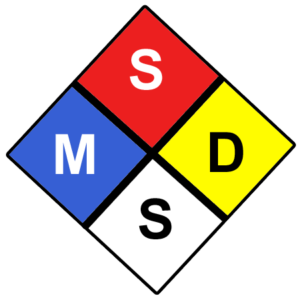
1) Location, Location, Location
There are many considerations for where to put your printer. Firstly, you should think about how often you plan to print; if you only plan to print occasionally, you might be alright with storing the printer in a closet and bringing it out only when you want to print something. However, the printing process itself will take many hours. Short prints might be 4-6 hours while longer prints could be up to 24 hours! In my opinion, the best thing is to have a dedicated space for 3D printing, even if this is only a desk or shelf. This is because the liquid resin is extremely messy, and will make any surface it touches sticky and unsafe to touch with bare hands. And no matter how careful you are, you will eventually get liquid resin all over things. Having a dedicated spot for the 3d printer and accessories will help contain this to one area, making cleanup easier and cross-contamination less likely.
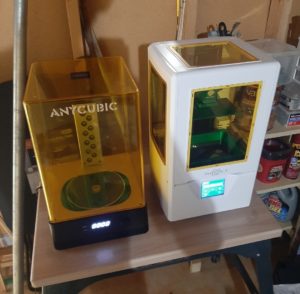
But where can that space be? In the example photo above, BeetleBombMinis from our Discord has put their printers on a shelf space in the garage. A heated garage is a good spot, because the UV resin used for printing usually gives off fumes. These fumes are not safe to inhale on a long term basis, and repeated exposure can sometimes cause allergies, sensitivities, and/or irritation in the lungs and airways. It is necessary to keep the fumes away from humans and animals when the liquid resin is exposed. This can be done by keeping the printers and resin in a separate room or garage that has a window or door that can be opened to vent the fumes outside, or by putting your printer inside an enclosure and using a fan with ducting to vent the fumes outside. One consideration is that resin printers require a fairly consistent, warm temperature (around 72°F or 22°C). So if your garage is unheated or you live in a cold place, this might limit where you can put the printer while it is printing, or whether you can keep the door/window open.
If you don’t have a room or garage you can dedicate to the 3d printer, or people will frequently be in the room where the printer resides, you can put it inside an enclosure. There are several types that you can use. But whatever you do, the enclosure should be relatively air tight unless you are continuously venting it outdoors with a fan. Some people even build their own enclosures out of foam and tape, or wood.
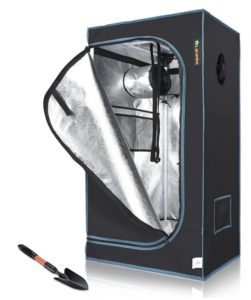
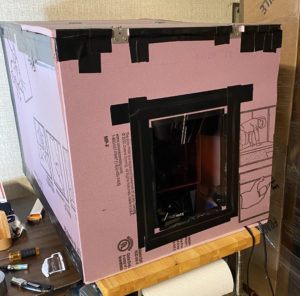
Some printers even have a place where you can connect ducting to the printer itself, and you can put the ducting outside a window. The fans from inside the printer case will blow the fumes out during printing, but you will still have to open a window or have some other ventilation when you open the lid.
2) Personal Protective Equipment (PPE)
If you’ve ever worked on a construction site, lab, medical setting, or done fabrication of some kind, you’re probably familiar with the term PPE. This is the gear that you need to use in order to protect yourself from the chemicals used in 3D printing. It may seem silly or unnecessary, but doing this could save you from a visit to the hospital. One of our former vendors discovered that they were not using the correct respirator type after developing Pleurisy, lung inflammation that can cause chest pains and decrease your ability to breath properly.
The first piece of PPE you’ll need is Nitrile Gloves. They specifically should be Nitrile or Neoprene gloves, NOT latex. Latex will not properly block the resin chemicals from passing through to your skin. Nitrile gloves, if you use disposables, should only come in contact with resin once and must be discarded after. I try to reuse my gloves because I hate the waste, but disposable nitrile gloves only keep the resin chemicals (especially when mixed with Isopropanol) from seeping through for a limited time. It may be an option to expose the gloves to UV and cure the resin in between uses, if you want to reuse them. I’ve also seen some people use long tweezers to handle the mini, especially to take it out of the Isopropanol bath. This will help keep your gloves clean and reusable as well.
The liquid resin or contaminated Isopropanol should not touch your skin. It can cause allergic reactions, and you really don’t want to absorb the chemicals in it.
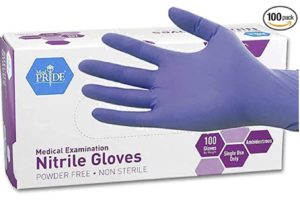
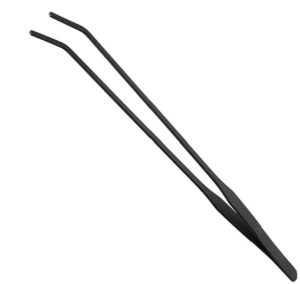
The second piece of PPE you absolutely should have is a respirator with Organic Vapor cartridges. The cartridges may be called something different depending on what country you’re in, but the important thing is that they must be capable of filtering Organic Vapors. A standard particulate filter will do nothing for the chemical fumes from the resin. While more expensive, this is a handy thing to have in your toolkit anyway. You can use it for any vapors that you are likely to encounter in your household, including paint fumes, lacquer thinner/acetone fumes, etc. You should wear the respirator any time that the liquid resin is exposed, and also whenever the Isopropanol used for cleaning up the resin is used. These two chemicals are very harsh on your lungs and airways, and if you are printing frequently, it’s worth the $30-40 to keep your lungs safe.
We use the 3M adjustable mask with the matching Organic Vapor cartridges, but you could use whatever brand you have locally as long as it fits your face well. To make your cartridges last longer, it’s recommended that you keep them in an airtight container (ziploc bag or plastic food container). If you can smell the resin while you’re wearing the mask, you need to change your cartridges.
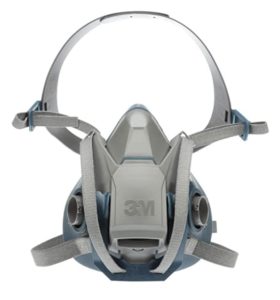
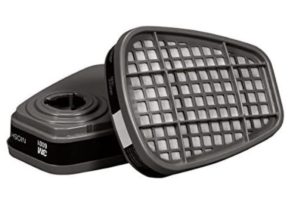
Side Note: Some men claim that because they have beards, it’s useless to wear a respirator since you can’t get a perfect seal. I would say that a slight leak around the mask edge is better than getting huge lungfuls of Isopropanol and Resin directly. The 3M mask was too big for my face (it was better suited to Erin’s), and left a gap around the bottom. But I still didn’t smell resin/isopropanol while wearing it, and most importantly, my sinuses didn’t get plugged up when I wore it; unlike the time I got lazy and didn’t put it on.
One piece of PPE that I consider to be optional is Safety Glasses. Typically you would wear these to prevent getting a chemical splashed in your eyes. I don’t always wear safety glasses, and have never managed to splash myself in the face, but that doesn’t mean it can’t happen. Again, these are good for other situations as well, so it’s not a bad thing to have on hand. I personally wear the 3M safety goggles when I do other tasks like woodworking or working with fiberglass, because I have contact lenses and can’t stand getting anything in my eyes.
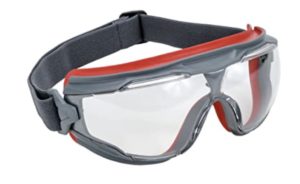
3) Cleanup Materials and equipment
What happens if you have a spill, splash, or catastrophe? Trust me, it’ll happen at some point. Resin is very messy and drippy, and it gets on everything, leaving a sticky and toxic surface. To get resin off a nonporous surface, simply use paper towel to soak up as much as possible, and then do a final wipe down with a clean paper towel soaked with Isopropanol to clean up any residue. To get it off a porous surface like clothing, you should remove the article of clothing and again try to soak up as much resin as possible with paper towels. Once you’ve soaked up as much as you can, expose the area to UV thoroughly to cure the resin and make it inert. All contaminated paper towels should also be exposed to UV; make sure they’re not crumpled up! All the resin should be exposed so that the paper towel can be thrown in the garbage later. Uncured liquid resin should never go in the garbage or down the drain, as it is very toxic to fish and wildlife even in small amounts.
If resin gets on your skin, DO NOT use Isopropanol to get it off! Isopropanol dissolves the resin, and it also is better at penetrating your skin than the resin is. So the two together means you will absorb more of the chemicals in the resin. Wipe the resin off with a clean paper towel and then wash the area with soap and water. Don’t let the water go down the drain if you can help it; contain the wash water and use a UV flashlight to cure any resin residue in it before it goes down the drain.
4) What to do with contaminated materials
What do you do with all that contaminated Isopropanol, or contaminated water (if you use water washable resin)? If you have a local facility for hazardous material drop off, you can take it there. If you don’t, you can UV cure the Isopropanol or water thoroughly, and either re-use it or let it passively evaporate outdoors. The leftover solids can then be thrown in the garbage. The same method can be used for anything else contaminated with resin; expose to UV until fully cured, then dispose of in the regular garbage. This includes your old Nitrile gloves, paper towels, anything you use to protect your table (like newspaper or aluminum foil), etc.
I hope this information is helpful to any new resin printers out there, and helps clear up any confusion about how to 3D print safely! If you liked this article or found it helpful, please leave a comment 🙂